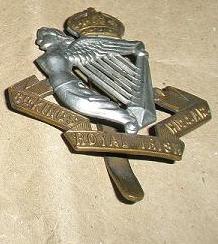From the 7th December in 1915 through to the 29th April 1916 during the throws of the First World War a battle occurred between the British forces and the Ottoman Empire (present day Turkey).
The Siege of Kut, also known as the Siege of Kut Al Amara or the First Battle of Kut involved a British garrison being besieged by the Ottoman Army. The British garrison of Kut was found some 100 miles south of Baghdad in the nook of the meandering Tigris River.
At the outset of the siege the British had an 8,000 strong number of troops, made up of the 6th (Poona) Division, part of the Indian Army. This army was led by the British Major-General Charles Townshend. The Ottoman Army had 11,000 men and was led by the German (Prussian) Field Marshal Colmar Freiherr von der Goltz (who was also a Baron) and the Ottoman Halil Bey.
The British had fallen back to the garrison of Kut on the 3rd December after the Battle of Ctesiphon against the Ottoman Army in November of 1915. This battle saw British lose a lot less men than the Ottoman Turks but also saw the British withdraw with the Ottoman Army in pursuit.
On the 3rd December the British settled into the garrison at Kut where they were dug in strong and well protected. When the Ottomans turned up on the 7th however the overwhelming number of Ottoman soldiers meant the British knew the Ottoman Army could lay siege to the garrison so they let the Cavalry escape south before the siege began.
In the month of December the Ottoman Army made three attacks on the garrison without any success, this led the German leader Field Marshal Colmar Freiherr von der Goltz to change tactics and build siege fortifications to stop the British receiving supplies or escaping.
Reports suggested that one month into the siege the British Major-General Charles Townshend wanted to escape south but was told to stand firm. Major-General Charles Townshend was then to report he only had rations for a month for his men, although there is reason to believe now he had enough for four months on reduced rations.
A relief expedition was sent by the British under General Aylmer in January 1916, this caused the Battle of Sheikh Sa'ad where General Aylmer’s forces were successful in pushing back the Ottoman Army by about ten miles. A few days later Aylmer sent his forces into battle again with the Ottoman Turks, this time called the Battle of Wadi pushing them a further 5 miles back.
General Aylmer decided to embark on a final push on the Ottoman Army but was unsuccessful as the British lost 2,700 men in the battle and this gave the Ottoman Army the strength to push back to earlier positions to keep up the siege. This was the Battle of Hanna.
The Ottoman Army was reinforced with a further 20,000 to 30,000 men to ensure they had enough men to repel any future British forces wishing to relieve the garrison at Kut.
In March further attempts were made by the British to relieve the Kut garrison and all these were unsuccessful. In April the Royal Flying Corps made supply drops to the garrison (believed to be the first supply drops by air in history). This was too little too late for the garrison however the British made a gesture of £2 million to let the British army leave the garrison which was declined and the British therefore surrendered on the 29th April 1916.
Major-General Charles Townshend went to Constantinople as a POW where he was treated well. The rest of the British troops, now numbering 13,000 from all the relief attempts, were forced to march across the desert to Allepo in present day Syria. This march caused many to die as they didn’t have the strength to complete the march.
The Siege of Kut was a decisive victory for the Ottoman Turks however Field Marshal Colmar Freiherr von der Goltz died 2 weeks before the British surrendered from Typhus, although rumours are rife that he may have been poisoned by the people in the Ottoman Army he led.
Reports suggest that in total the British lost 30,000 dead or wounded and 13,000 captured during the siege and the relief operations associated with it while the Ottoman Army lost around 10,000 dead or wounded.
 The Maginot Line was not created to stop a German force, in fact it was solely created to hamper any progress should they decide to try and invade France allowing time to prepare and attack should an invasion occur.
The Maginot Line was not created to stop a German force, in fact it was solely created to hamper any progress should they decide to try and invade France allowing time to prepare and attack should an invasion occur.





